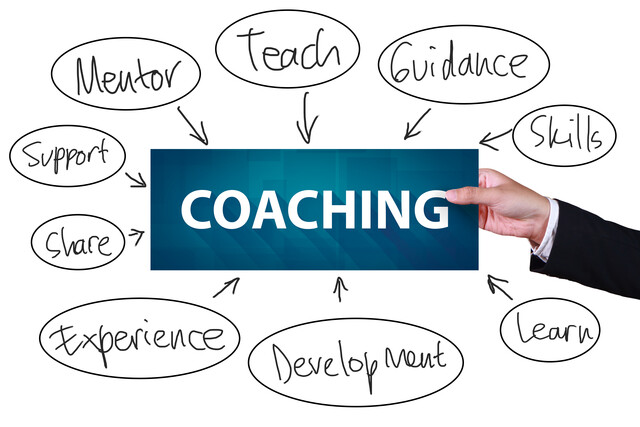Introduction
Conversation is one of the most common and direct methods for communicating. In order to be as effective as possible, it is important to know how to conduct yourself in a conversation. There are several skills that are required to be effective with this type of communication, and some of them will be discussed in this article.
Objectives
This article teaches the most important skills required to use conversation as an effective form of communication. Mastering conversational skills makes you more interesting, and more likely to truly experience two-sided communication.
� Why is it important to cultivate good conversational skills?
� What is active listening, and how can I use it?
� What does it mean to be an engaging speaker?
The Importance of Good Conversational Skills
Whether you are trying to develop business or professional relationships, being a good conversationalist is vital. Having these types of skills means that you will be able to set others at ease, and this results in them forming better opinions about you. You will be seen as someone who is approachable. People will recognize that you listen to what is being said, and will feel validated by it.
While these are all obviously advantages for developing worthwhile relationships, the biggest benefit is your ability to grow as a person. For example, engaging in active listening helps ensure that you are truly understanding what is being said to you. Soliciting thoughts and advice from others means that you will be better informed when making your own decisions. Good conversational skills foster the exchange of information, and everyone benefits in the long run.
Active Listening
One method for helping ensure effective communication is to engage in what is known as "active listening." This is a way of interacting with others in which you make a point to comprehend what is being said. In many conversations, participants are merely waiting for the other person to finish talking so that they can speak next. With active listening, you truly focus on the speaker's words, and even take it further, to be sure you understand.
The first step in active listening is to attempt to suspend judgment long enough to really understand what is being said to you. Oftentimes, our communication is hindered by "confirmation bias." This bias causes us to hear the parts of a conversation that confirm our own beliefs and values, while discounting or ignoring other aspects.
For example, if you expect the speaker to be hostile with you, you are more likely to feel that he or she is being negative � even when the speaker may actually be trying to find some middle ground. In order to get the full effect, you may need to watch a person's body language, in addition to hearing the words that are being said. It is also important to try and be observant about the emotions that the speaker may be feeling.
Once the speaker has reached the end of his or her bit of dialogue, it is your turn to speak. Notice that you do not interrupt the other person during active listening, as that is going to disturb the flow of information. Now that the speaker has paused, active listening dictates that you paraphrase what has just been said to you. Basically, this means that you repeat what has been said, only you do so in your own words. This gives the speaker the opportunity to let you know if you have correctly understood him or her.
Because you have paid attention to body language and emotions, you may be able to use those cues to help interpret what is being said. When paraphrasing, you may also include statements like, "You seem to feel frustrated," or "You appear to be quite excited about that." These statements are not facts, rather they give you a way to express what you understand, and the other person can agree or disagree.
Remember that just because you are repeating someone's opinions back to them, it does not mean you have to agree. You are simply making sure that you understand the ideas the speaker is trying to share. Your first impulse in a situation where you disagree may be to contradict the speaker, but utilizing active listening often allows you to diffuse a situation before it gets out of control. When the speaker realizes you are attempting to understand what is being said, rather than simply contradicting it, he or she may be more inclined to cooperate with you.
Active listening is a conversational skill that can vastly improve the effectiveness of communication between two people, or even within a group. It is especially useful in situations where there is conflict, or where someone is trying to learn a new skill. Active listening must be used carefully, though, because it can be seen as condescending. Be careful not to patronize the speaker, and to avoid repeating back everything that is said, whether it needs to be or not.
Be an Engaging Speaker.
Being an active listener is certainly one way to set people at ease and develop relationships. You probably don't always want to be listening to and processing other people's opinions, though, and would like the opportunity to communicate your own thoughts and ideas. One of the best ways to do this is to be someone who others want to hear from.
It seems like some people are just natural-born speakers, while others tend to be meeker, and often fade into the background. However, effective communication is a skill that can be learned; one of the hardest, yet most rewarding parts of this education is learning to be an engaging speaker. There are several methods for increasing your approachability and improving your ability to talk to others.
Step One � Be Prepared.
If you want to really engage others in conversation, it may require a little preparation on your part. For example, get to know your audience. If you are speaking with someone who really enjoys sports, you might be more effective getting your point across if you use a football analogy. Try to find topics that you and the listener have in common, and focus on those. You may even want to do a little research on various topics to make sure you are well-versed and can hold up your end of an interesting conversation.
Step Two � Don't be a Know-It-All.
Just because you know everything there is to know about the Internet, or the history of Rome, or the nutritional benefits of some new herbal supplement -- that doesn't mean that the listener wants to hear it all. Being an expert in a topic is great, and it definitely gives you a great conversation starter, but make sure the other person gets the opportunity to speak, and that he or she doesn't become totally overwhelmed or bored with the conversation.
Step Three � Be Yourself.
Being "fake" or a "phony" is the kiss of death in social or business situations. In order to be an effective communicator, it is necessary for people to realize that you are being genuine. This can translate into something as simple as making eye contact, so the listener sees you have nothing to hide. Speak clearly and loudly enough for your voice to be heard and understood. Your opinions are just as important as everyone else's, and you want to be sure that they are shared. Be prepared to hear other people's opinions, though, and to integrate that information into your own understanding.
Step Four � Relax.
Group Communication
Introduction
Communicating within groups is different than communicating one-on-one. There are a variety of dynamics at work in a group that don't come into play in other types of communication. Whether you arespeaking in front of a large group or are a member of a smaller team that needs to communicate effectively, there are certain skills that can make your task easier. Simply understanding some of the basic behaviors of humans in groups can give you an advantage when it comes time to foster communication.
Objectives
In this section, you will learn more about group dynamics and how to use them to your advantage. Groups have very specific ways of interacting, and anticipating this can be invaluable in making sure the group actually is effective. Using the skills you learn here, you have a better chance of situating yourself as a leader in a group situation.
� What are the basics of group dynamics?
� How can I make the most out of group interaction and communication?
� What happens when there is a miscommunication, and how can I avoid it?
The Basics of Group Dynamics
A "group" is really formed any time there are more than two or more people together, but for our purposes, we're going to talk about groups of three or more. Small groups range up to about 12 people. Most group members share some sort of common identifying factor. Maybe they are co-workers. They could also be fans of the same celebrity, or users of a particular piece of software.
Groups can be categorized in a number of ways. A "primary group" is generally several individuals who have family ties. A "secondary group" is more about having ties through an institution. A "reference group" is one to which an individual feels drawn due to shared interests or values. Reference groups might include cliques, teams, communities, clubs, or even gangs.
Any time several people are put together in order to reach a common goal, they will go through an almost identical process. Being aware of this process can help you anticipate what will happen and adjust your behaviors accordingly. Once given a goal and some basic rules, a group will generally form in the following way:
- Individual group members will seek to interact with others they perceive to be like themselves, based on aspects such as shared interests, similar cultural background, or something else they have in common. These first relationships will generally only involve two or three group members. Some sort of dominance will usually be understood.
- Once these subsets have been established, individuals may venture out to interact with others, but will often return to the original subset. These groups may even become somewhat territorial in the physical space.
- The smaller subsets will begin to intermix, and larger sets will emerge with approximately six to eight members in each.
- When the larger sets form, there will be a re-establishing of dominance and territory, while members learn what their new roles will be. This phase in the group creation will generally include some disagreements and struggles for power and status.
- Once these problems are settled, the group will have been fairly cohesively established.
- Groups that experience a fair amount of aggression have not solidified, because dominance has not been established.
- These smaller sets of 10 or fewer individuals will often continue to compete with one another for dominance and territory throughout the life of the group.
Group Interaction and Communication
Interpersonal communication happens in a number of ways, including verbal and nonverbal transference of information. The information we transmit can be translated differently, according to the context. The surface level of a message is called its "content message," while the way it is said refers to its "relationship message." For example, if you said "I'm so glad you're here," the content message would imply that you were happy to see the person. If you said it in a sarcastic tone of voice, however, the relationship message would mean something completely different.
According to William Schutz, interpersonal communication happens because we need a variety of things from other people.
- First of all, we may need inclusion. This refers to our desire to identify with others. Think of joining a club where people meet to engage in a common interest, such as golf or bridge.
- The second need is for control. In some cases this refers to an individual's need to fill a leadership position. Not everyone wants to be a leader, however, and the need is for control over some aspect of their lives.
- The final need is for affection. Groups are important because they help us create relationships.
How to Be Effective in Groups
In order to be the most effective communicator, it is necessary to utilize the skills that get your ideas and opinions across to the other members of the group. One of the most important skills to keep in mind is to speak concisely. Rather than rambling on about a topic, choose the most important points and state them briefly. If others need more information, they will ask for it. This gives you the opportunity to expound on your ideas while still drawing other people into the conversation.
One of the best ways to effectively communicate in a group setting is to create some sort of agenda by which the group can solve problems. "Reflective thinking" is one such agenda that can help a group communicate among its members to create solutions to problems. John Dewey's agenda for reflective thinking includes:
1. Problem identification � The group works together to identify exactly what problem needs to be solved, and why.
2. Problem analysis � The group now views the problem in light of the forces that can help, and the forces that can hinder. Identifying both types of forces at play in the situation can help identify the root cause of the problem, as well as help determine the solution.
3. Criteria selection � Next, the group should determine what outcome they would most like to see. This should include any goals they are trying to reach with their solution.
4. Solution generation � The entire group brainstorms as many potential solutions to the problem as they can. No solutions are rejected at this phase, to allow for the widest range of possibilities and creative thought.
5. Solution evaluation and selection � Using the criteria created in Step Three, each of the solutions is evaluated for its potential to solve the problem for the best outcome.
6. Solution implementation � Coming up with the solution to a problem is great, but actually implementing the solution is the desired outcome.
When it comes time for a group to make a final decision about something, there are several possible methods for coming to an agreement. In some groups, the decision is simply the responsibility of the leader, and he or she informs the rest of the group of the final decision. In other cases, everyone's opinion matters.
When all group members agree on the same decision, it is called a consensus. Compromise happens when the final decision must be adjusted so that everyone in the group has to give up some of their demands. In some situations, a final decision is left to a vote, and the choice that receives the majority of the votes is the one that wins. If a group just can not come to a compromise, an arbitration may take place. In this case, an outside person or group makes the final decision.
Miscommunication
There are three main kinds of miscommunication that can happen within a group, and avoiding them can be key to communicating effectively.
- Non-understanding takes place when a member (or members) of the group cannot properly interpret what is being said. In fact, they may not be able to come up with any interpretation at all.
- Misunderstanding happens when a group member believes that he or she has properly interpreted the speaker's message, but it is not what the speaker actually meant.
- Misinterpretation is when the speaker's words are interpreted to seem as if the speaker has different values than the rest of the group.
It is also possible for a group member to intentionally mislead the others by evading questions, omitting important information, obscuring the issue with evocative language, or simply lying outright. These all function to limit the effectiveness of communication.






























